

 Trend spotting at New Year’s Eve dinner party
Trend spotting at New Year’s Eve dinner party
With Christmas and New Year dinners coming up you might be in need of a conversation topic. Why not try trends in the wine world 2019? What will be the wine trends in 2019 in your opinion?
Trend spotting has peak season at this time of the year and the good thing about it is that you can say virtually anything. It will be a whole year before anyone can say that you were wrong. And by then most people have probably forgotten what you said anyway.
But we can probably safely count on organic wines, the environment and everything that goes with it to be a continued trend. This includes how you make the wine. Because during the vinification you can choose to either save or waste energy and water. But also additives belong here even if they are not obviously environmental-related.
The research will continue to find alternatives to adding sulphur in the wine. Recently, a product with inactive yeast was allowed for use in organic wines. The yeast consumes dissolved oxygen in the wine, thus protecting the wine from oxidation during ageing. Ingenious.
If you do not like discussing sulphur contents or even pesticide residues in the wine that you are drinking, talk about bubbles instead, always a popular topic. It feels safe to say that the big bubble-trend will continue. You can always add that you foresee that more and more people will want extra brut and other super-dry champagnes, but that also the demi-sec style will increase. (And regular “brut”, in between the two, will lose.) Read more on the sweetness terms on bubbly wines – they are often miss-quoted in press and literature – in the article referenced in the Brief.
That’s the way it is with trends. They always go in different, sometimes opposite, directions, such as (another trend) consumers buy more premium wines but the bulk wine market is also increasing.
To be truthful, trends in the wine world don’t vary that much from year to year. If a trend arrives, it tends to stay for a while. And certain predicted trends sometimes seem more like a wish list of the predictor. But say it loud enough and the list will maybe eventually transform itself into a trend.
Do send us a mail with your personal favourites for 2019 wine trends! We will be happy to publish all suggestions.
A few more “details”:
It is time, high time, to book your next spring wine tour to Bordeaux. More info in the Brief. The fall program is coming soon, very soon, and will also include Bordeaux, as well as Champagne and New Zeeland.
Book your wine tour now!
A text that is a little bit different that most articles is our “Uncorked” where we write about some of the memorable bottles that we have tasted or drunk recently. For example a wine from Moldova, a “simple” bourgogne rouge from 1997, 21 years of age, and a merlot from Rioja. And much more. In the Brief!
We wish you Happy Holidays with plenty of good wine!
Britt & Per
PS: Recommend to your friends to read the Brief !
– – – – –
What’s on at BKWine Tours
Winter 2019
- Chile-Argentina, January 20 – February 4, 2019
- South Africa, February 16-24, 2019
- New Zealand, March 11-26, 2019
- Bordeaux, April 10-14, 2019
Autumn
- New Zealand, November 20 – December 5, 2019
More coming
For more information please contact us on email or on phone (we’re on French time), or go to our wine travel site on www.bkwinetours.com!
We also make custom designed wine tours – on-demand tours for you and a group of friends, for your company (maybe to scout new winegrowers?), for a special event… We can combine winery visits and wine touring with other activities: gastronomic workshops, visit to an oyster farm, truffles hunting, cheese making, and more. More info on the custom designed and bespoke BKWine wine tours and travel here!
Read our book(s)
We have written several wine books, nine at the last count. One of them has been translated to English; the others are (so far) only available in Swedish. This is the one that is available in English: Biodynamic, Organic and Natural Winemaking, Sustainable Viticulture and Viniculture
All our books are on wine, but on different subjects: wines of the Languedoc, wine growing and wine making, the wines of France, Tuscany, Bordeaux, Piedmont, Burgundy, Champagne. Several have won prestigeous prizes and awards. Read more on our wine books.
From the World of Wine
In Brief
In short, news and stuff from the world of wine.
Spherical, biodynamic … an oak barrel can be made in many different ways
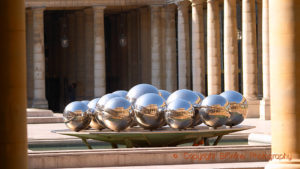
The big trade fair Vinitech 2018 took place in Bordeaux in November. Every year Vinitech presents new and innovative equipment for winegrowing and winemaking. This year, for example, a biodynamic oak barrel drew attention. It is manufactured by Tonnellerie Sylvan and is made with trees that have been cut down at specific dates according to the moon calendar. But even more spectacular was a spherical oak barrel (yes, round just like a ball!) called Galile-Oak. This is, says the manufacturer Seguin Moreau, a shape that maintains a uniform temperature, retains the grapes’ and the wine’s energy, and provides a new dimension to ageing on lees. The barrel is rotating and holds 15 hectolitres. It has a small window where the winemaker can see what happens during the fermentation. And to make it even more spectacular the barrel rests on a fancy iron chassis inspired by Gustave Eiffel. Whatever will they think of next? See more news from Vinitech here. For a better picture of the beautiful Galile-Oak look here.
The market for organic wines will continue to grow in France
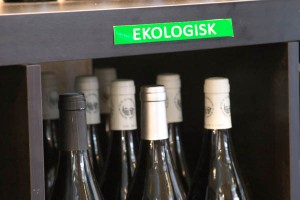 Demand for organic wine will continue to increase in France, SudVinBio announced after looking at developments in recent years and on future trends. The study has been made as a prelude to the organic wine fair Millésime Bio, which takes place in Montpellier in late January. Organic wine sales have grown annually by 16.8% by volume over the period 2012-2017. It will, according to the study, continue to grow by 14% per year, some more in value, over the period 2017 to 2022. In 2012, organic wine had 1.69% of the market in France. In 2017 the figure had increased to 3.72% and the 2022 figure is estimated to be 7.68%. Maybe there will even be a problem with the supply to satisfy the ever-increasing demand. Organic wine growing has always faced challenges and maybe even more now after the EU countries’ decision to reduce the use of copper spraying from 6 to 4 kilograms per year and hectare. Read more Augure Clair de Lune Sudvinbio.
Demand for organic wine will continue to increase in France, SudVinBio announced after looking at developments in recent years and on future trends. The study has been made as a prelude to the organic wine fair Millésime Bio, which takes place in Montpellier in late January. Organic wine sales have grown annually by 16.8% by volume over the period 2012-2017. It will, according to the study, continue to grow by 14% per year, some more in value, over the period 2017 to 2022. In 2012, organic wine had 1.69% of the market in France. In 2017 the figure had increased to 3.72% and the 2022 figure is estimated to be 7.68%. Maybe there will even be a problem with the supply to satisfy the ever-increasing demand. Organic wine growing has always faced challenges and maybe even more now after the EU countries’ decision to reduce the use of copper spraying from 6 to 4 kilograms per year and hectare. Read more Augure Clair de Lune Sudvinbio.
Read: Read our book on organic, biodynamic, sustainable and natural wines if you want to know more.
The Baron cooperage in Cognac plants trees for the environment
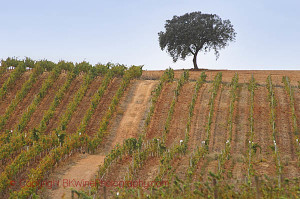 The family-owned Baron cooperage will plant as many oak trees as the number of barrels they produce each year, starting this year, which is 12,000 (barrels and trees). From one tree you can make more than one barrel, but not many more. The “waste” is around 80% which of course can be used for other things. Baron will thus replant 8 hectares of forest, which corresponds to 1,400 tonnes of captured carbon dioxide. Baron was founded in 1875 and is located in the Cognacs district. (But also other oak forests in France are well-maintained and replanted as cut.) Read more: agence-fleurie.
The family-owned Baron cooperage will plant as many oak trees as the number of barrels they produce each year, starting this year, which is 12,000 (barrels and trees). From one tree you can make more than one barrel, but not many more. The “waste” is around 80% which of course can be used for other things. Baron will thus replant 8 hectares of forest, which corresponds to 1,400 tonnes of captured carbon dioxide. Baron was founded in 1875 and is located in the Cognacs district. (But also other oak forests in France are well-maintained and replanted as cut.) Read more: agence-fleurie.
Three white fungus resistant hybrid grape varieties approved in Austria
Rosé wine in Provence: The success continues with even higher prices
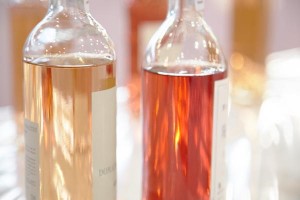 There is no end to the success of rosé wines in Provence. Producers and wine merchants are already thinking of next summer. Many producers in Provence will have sold their vintage 2018 before Christmas. And prices for Cote de Provence rosé continue to rise. The wholesale purchase price of 350 euros per hectolitre – bulk wine price – is an increase of 30% since last year and quite a lot more than most other French wine regions can expect. Negociants chase wine to satisfy the export market, which shows no signs of a slowdown. They have difficulties finding sufficient volumes. The first boats to the United States with Provence rosé for the summer of 2019 left mid-December. It makes us think of Champagne where the production capacity is used at 100% (they cannot plant more) and instead the producers are selling products at higher prices to balance demand. Read more: vitisphere.
There is no end to the success of rosé wines in Provence. Producers and wine merchants are already thinking of next summer. Many producers in Provence will have sold their vintage 2018 before Christmas. And prices for Cote de Provence rosé continue to rise. The wholesale purchase price of 350 euros per hectolitre – bulk wine price – is an increase of 30% since last year and quite a lot more than most other French wine regions can expect. Negociants chase wine to satisfy the export market, which shows no signs of a slowdown. They have difficulties finding sufficient volumes. The first boats to the United States with Provence rosé for the summer of 2019 left mid-December. It makes us think of Champagne where the production capacity is used at 100% (they cannot plant more) and instead the producers are selling products at higher prices to balance demand. Read more: vitisphere.
Tea instead of sulphur to protect the wine
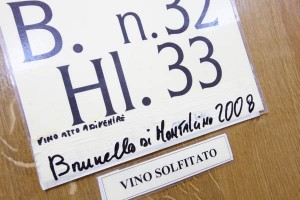 A few years ago, we wrote in the Brief about the South African wine producer KWV who had made a wine called Earth’s Essence without added sulphur. Instead, they had used the rooibos plant, known for its antioxidant properties. Continued research in South Africa has now shown that the South African tea plant honeybush also has antioxidant and antimicrobial properties. In both cases, it is important to ensure that the two plants don’t give any tea flavours to the wine. Researches have now developed a soluble powdered tannin extract from honeybush that is totally tasteless. This extract is added in small quantities, around 2 grams per 100 litres for white wines. This additive is said to protect the wine so well that no sulphites need to be added. Read more wine-za. Protecting the wine from oxidation and other nefarious attacks that can spoil it is an active area of research. Recently adding “dead yeast cells”, which is no more scary than dry cell walls, was given green light as anti-oxidant.
A few years ago, we wrote in the Brief about the South African wine producer KWV who had made a wine called Earth’s Essence without added sulphur. Instead, they had used the rooibos plant, known for its antioxidant properties. Continued research in South Africa has now shown that the South African tea plant honeybush also has antioxidant and antimicrobial properties. In both cases, it is important to ensure that the two plants don’t give any tea flavours to the wine. Researches have now developed a soluble powdered tannin extract from honeybush that is totally tasteless. This extract is added in small quantities, around 2 grams per 100 litres for white wines. This additive is said to protect the wine so well that no sulphites need to be added. Read more wine-za. Protecting the wine from oxidation and other nefarious attacks that can spoil it is an active area of research. Recently adding “dead yeast cells”, which is no more scary than dry cell walls, was given green light as anti-oxidant.
Travel: Travel to South Africa’s wine lands with on a wine tour with BKWine.
How eco-friendly is Bordeaux?
A European wine that is organic is easy to identify. You just look for the green EU leaf. If it does not have the leaf it is not organic. But now there are also more and more “sustainability” labels on the bottles in France. However, “sustainable” is different from “organic”. Organics is mainly about the work in the vineyard and the cellar and the processes and technologies, while sustainable is more about nature resources and biodiversity (often more vaguely defined). There is no opposition between them and the one does not replace the other; rather they are complementary. Bordeaux, France’s largest AOP region, started several years ago to set targets for its environmental work and the result is reduced spraying and reduced use of chemical weed control. Today, 60% of the Bordeaux chateaux have some type of environmental label. The goal is to reach 100%. Some of the labels that can now be seen on Bordeaux bottles are:
- EU Organic Certification (532 chateaux certified with 8756 hectares)
- Demeter and Biodyvin for biodynamic wine growing (45 chateaux certified with 984 hectares, always also organic)
- Terra Vitis, a sustainability label (62 chateaux certified)
- HVE, Haute Valeur Environnementale, a sustainability label initiated by the Ministry of Agriculture (221 chateaux certified)
- RSE AGRO and Agriconfiance, 2 labels for cooperatives only (2352 chateaux certified)
- AREA, label for the Aquitaine region only (369 chateaux certified)
Read more: bordeaux
Travel: Travel to Bordeaux on a wine tour with BKWine.
Read: Read our book on organic, biodynamic, sustainable and natural wines if you want to know more.
Cigalus 2016 from Gérard Bertrand in Languedoc is this year’s red Nobel wine
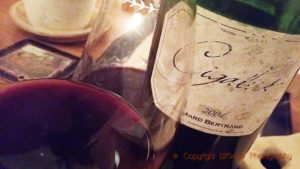
In fierce competition (we guess), Cigalus 2016 from Gérard Bertrand in Languedoc had the honour of being selected as the red wine served during the Nobel dinner in Stockholm on December 10th. We have been particularly fond of Languedoc wines for a long time, so we are happy that this amazing region was chosen for this spectacular dinner. Cigalus is produced by the big and famous producer Gérard Bertrand and the Cigalus estate, situated on the edge of the Corbières region, is also his home. The estate has been biodynamic since 2002 and has been certified by Demeter since 2010. Seven grapes are included in Cigalus 2016: Syrah and Carignan, whose bunches are whole fermented (no destemming), plus Merlot, Cabernet Sauvignon, Cabernet Franc, Caladoc and Mourvèdre, all destemmed. The wine is aged for 12 months in new French oak barrels. We have tasted Cigalus on several occasions. It is always a very good and full-bodied wine with soft, lean tannins, dark fruit and spicy garrigue notes. Worth trying is also the Cigalus Blanc with Chardonnay, Viognier and Sauvignon Blanc.
Features
Features that we have published during the past month, with lots of reading for you.
Newly Launched Luxurious Tommasi De Buris Amarone Wine Took 18 Years To Make | Britt on Forbes
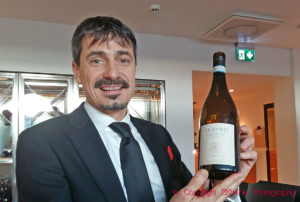 It all started in the year 2000. The family Tommasi bought a plot called La Groletta in the famous La Grola vineyard in Valpolicella. They knew immediately that they wanted to make a special wine from the 4.7 acres plot. And this family is patient. It took 18 years before they were ready to launch this very special wine, called De Buris. “We didn’t need another amarone”, says Pierangelo Tommasi, “but we wanted a new luxurious high-end product, and to be fair to the region we wanted it to be an amarone.”
It all started in the year 2000. The family Tommasi bought a plot called La Groletta in the famous La Grola vineyard in Valpolicella. They knew immediately that they wanted to make a special wine from the 4.7 acres plot. And this family is patient. It took 18 years before they were ready to launch this very special wine, called De Buris. “We didn’t need another amarone”, says Pierangelo Tommasi, “but we wanted a new luxurious high-end product, and to be fair to the region we wanted it to be an amarone.”
Read more on Britt’s article, originally published on Forbes, on BKWine Magazine: De Buris, a luxury amarone from Tommasi, is born at 18 | Britt on Forbes.
“Mosel is perfect for riesling, why should I grow something else?”
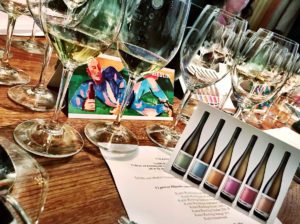 Sybille Kuntz is the latest generation in a long line of wine growers in the Mosel Valley. After taking over her family’s vineyard more than 30 years ago, quality has moved up to a different dimension. Unlike many others in Germany, she makes a small number of wines, six. They range from crispy dry to overwhelmingly sweet. Sybille Kuntz knows exactly how the vines should be trained, which pesticides that cannot be used, exactly when the harvest should be done and, above all, what grape to grow. Here it is only riesling that counts. She repeatedly said the phrase “why should I grow something else when the soil is perfect for riesling?”
Sybille Kuntz is the latest generation in a long line of wine growers in the Mosel Valley. After taking over her family’s vineyard more than 30 years ago, quality has moved up to a different dimension. Unlike many others in Germany, she makes a small number of wines, six. They range from crispy dry to overwhelmingly sweet. Sybille Kuntz knows exactly how the vines should be trained, which pesticides that cannot be used, exactly when the harvest should be done and, above all, what grape to grow. Here it is only riesling that counts. She repeatedly said the phrase “why should I grow something else when the soil is perfect for riesling?”
BKWine Magazine’s reporter Sven-Olof Johansson met Sybille in Stockholm and tasted the wines, plus some bonus: Riesling as we want it, from Mosel and from Sybille Kuntz.
Can we once and for all establish what is true and correct about brut, sec-dry, demi-sec etc?
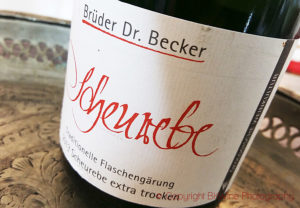 Some myths or mistakes are more persistent than others. One of these is how much sugar champagne and other sparkling wines contain. Time and again, incorrect numbers are repeated, in articles, on the internet, and even in books (even the newest ones). It is hardly a life-changing issue, but if you really want to explain exactly how many grams of sugar the different terms mean, then it may be just as well to get the numbers correct. Virtually all sparkling wines have an indication of the amount of sugar the wine contains. Here are the limits that apply:…
Some myths or mistakes are more persistent than others. One of these is how much sugar champagne and other sparkling wines contain. Time and again, incorrect numbers are repeated, in articles, on the internet, and even in books (even the newest ones). It is hardly a life-changing issue, but if you really want to explain exactly how many grams of sugar the different terms mean, then it may be just as well to get the numbers correct. Virtually all sparkling wines have an indication of the amount of sugar the wine contains. Here are the limits that apply:…
Read the rest in Per’s article on BKWine Magazine: Sugar levels in champagne and other sparkling wines: brut etc.
Travel: Travel to Champagne on a wine tour with BKWine.
Juvenile vintage port, 2016, for Christmas or for later | Britt on Forbes
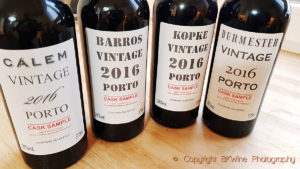 Most port wine houses have now released their Vintage Port 2016. And although some people would say that it is much too early to drink such a wine now, drinking a young Vintage Port is really quite enjoyable. But whatever you prefer, drinking it right away or keeping it in your cellar, here are some impressions of the magnificent 2016 harvest. 2016 was a superb year in the Douro Valley with enough sunshine and enough water to enable the growers to pick perfectly ripe grapes.
Most port wine houses have now released their Vintage Port 2016. And although some people would say that it is much too early to drink such a wine now, drinking a young Vintage Port is really quite enjoyable. But whatever you prefer, drinking it right away or keeping it in your cellar, here are some impressions of the magnificent 2016 harvest. 2016 was a superb year in the Douro Valley with enough sunshine and enough water to enable the growers to pick perfectly ripe grapes.
Read more on this article by Britt on BKWine Magazine, originally published on Forbes, including tasting comments on several wines: The latest declared vintage port year tasted, 2016 | Britt on Forbes.
Travel: Travel with BKWine to the vineyards of Portugal, the Douro Valley.
A new champagne house aims for the premium segment, Frerejean Frères
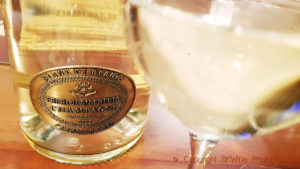 Starting a brand new champagne house is probably not easy. The process to make champagne is very outdrawn, with substantial capital costs, and there’s a fierce competition with high-budget marketing. But the brothers Guillaume, Rodolphe and Richard Frerejean took the challenge. In 2005 they founded the house Champagne Frerejean Frères and they have managed to make themselves a name in the fierce competition that exists in the upper price levels of Champagne.
Starting a brand new champagne house is probably not easy. The process to make champagne is very outdrawn, with substantial capital costs, and there’s a fierce competition with high-budget marketing. But the brothers Guillaume, Rodolphe and Richard Frerejean took the challenge. In 2005 they founded the house Champagne Frerejean Frères and they have managed to make themselves a name in the fierce competition that exists in the upper price levels of Champagne.
Read more on the house and their wines in Britt’s article on BKWine Magazine: Champagne Frerejean Frères in Avize, a newly launched challenger.
Travel: Travel to Champagne on a wine tour with BKWine.
Uncorked: Good wines we have tasted recently, December 2018
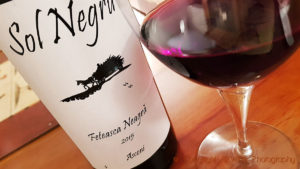 Uncorked: Under this heading, we collect various wines that we have tasted, and liked, recently. It can be wines that we have had during dinner at home, at wine tastings, press lunches, visits to vineyards, or other occasions. Some inspiration for more wine discoveries! As well as a perspective on what to expect from older wines. This month: A pleasant discovery from the new wine country of Moldova, some mature Bordeaux and Burgundy wines, Merlot from a young star winemaker in Rioja, a Madiran, once again showing the ageing capacity of the grape Tannat, interesting red and white from the Loire Valley, whites with character from Languedoc. And some more.
Uncorked: Under this heading, we collect various wines that we have tasted, and liked, recently. It can be wines that we have had during dinner at home, at wine tastings, press lunches, visits to vineyards, or other occasions. Some inspiration for more wine discoveries! As well as a perspective on what to expect from older wines. This month: A pleasant discovery from the new wine country of Moldova, some mature Bordeaux and Burgundy wines, Merlot from a young star winemaker in Rioja, a Madiran, once again showing the ageing capacity of the grape Tannat, interesting red and white from the Loire Valley, whites with character from Languedoc. And some more.
Read more in Britt’s article on BKWine Magazine: Uncorked: Good wines we have tasted recently, December 2018.
Wine tours
Some information about current and future wine tours with BKWine.
Bordeaux: Classic and stylish, but brimming with new ideas| wine tour
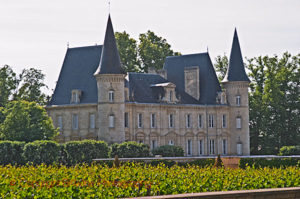 Bordeaux is one of France’s biggest wine regions and the biggest for quality wines. More or less all wines that are made here are AOP wines, appellation d’origine protégée. But despite this fact, you find in Bordeaux wines at all price levels. Bordeaux has many faces and we will discover some of them during our spring and autumn wine tours to this classic and elegant region. We will be welcomed at big prestigious chateaux as well as smaller family estates. Bordeaux is still a classic region, producing wines capable of long ageing but you will also discover that there are a lot of new ideas floating in the air. Did I mention our chateau lunches? They are legendary and much acclaimed by our returning travellers.
Bordeaux is one of France’s biggest wine regions and the biggest for quality wines. More or less all wines that are made here are AOP wines, appellation d’origine protégée. But despite this fact, you find in Bordeaux wines at all price levels. Bordeaux has many faces and we will discover some of them during our spring and autumn wine tours to this classic and elegant region. We will be welcomed at big prestigious chateaux as well as smaller family estates. Bordeaux is still a classic region, producing wines capable of long ageing but you will also discover that there are a lot of new ideas floating in the air. Did I mention our chateau lunches? They are legendary and much acclaimed by our returning travellers.
Read more about the spring Bordeaux wine tour 10-14 April 2019 and soon on the autumn Bordeaux wine tour on 2-6 October 2019 (program will be published very soon).
Champagne, the real thing | wine tour
Does “real Champagne” exist? No! Either it is Champagne or it is not. There are many sparkling wines in the world but only one that comes from the region of Champagne. And nothing else can be called Champagne. But it used to be common practice that whenever people drank wine with bubbles, they drank “Champagne”, when in fact, it usually was not from Champagne a little bit east of Paris. When they really drank Champagne they said they drank “real Champagne”. Today, awareness is greater among most consumers. We hope. Join us our tour to Champagne in September and you will have the opportunity to taste and drink many different “real” delicious Champagnes during our tastings and our legendary magnificent lunches.
Read more about the Champagne wine tour, 11-15 September 2019, soon on the BKWineTours.com site
New Zealand, Sauvignon Blanc and much more | wine tour
New Zealand came from almost nowhere and became world famous for its Sauvignon Blanc. This grape is still the dominant one New Zealand, but today there is a great variety of other grapes as well. In addition, Sauvignon Blanc is made in many different styles. There are winemakers who experiment with skin contact, or use oak barrels, age on lees or use different kinds of yeasts varieties and other techniques to obtain the best characters in their Sauvignon Blanc wines.
We will taste a lot of different wines during our visits to around 20 different wineries. But we will also have time for some sightseeing. We will see geysers, kiwi birds, glaciers and picturesque villages; get to know the Maori culture. We will see the landscape on our comfortable bus ride from Auckland on the North Island down to Queenstown on the South Island. Our tours to New Zealand are in March and in November 2019. The March tour is fully booked. Join us in November when summer is just starting.
Book your wine tour to New Zealand now, an experience and an adventure! New Zealand wine tour, November 20 – December 5, 2019.
Don’t be an egoist! Share with your friends and other wine enthusiasts! Forward the Brief to your friends! Suggest that they sign up for a free subscription !
© Copyright BKWine






